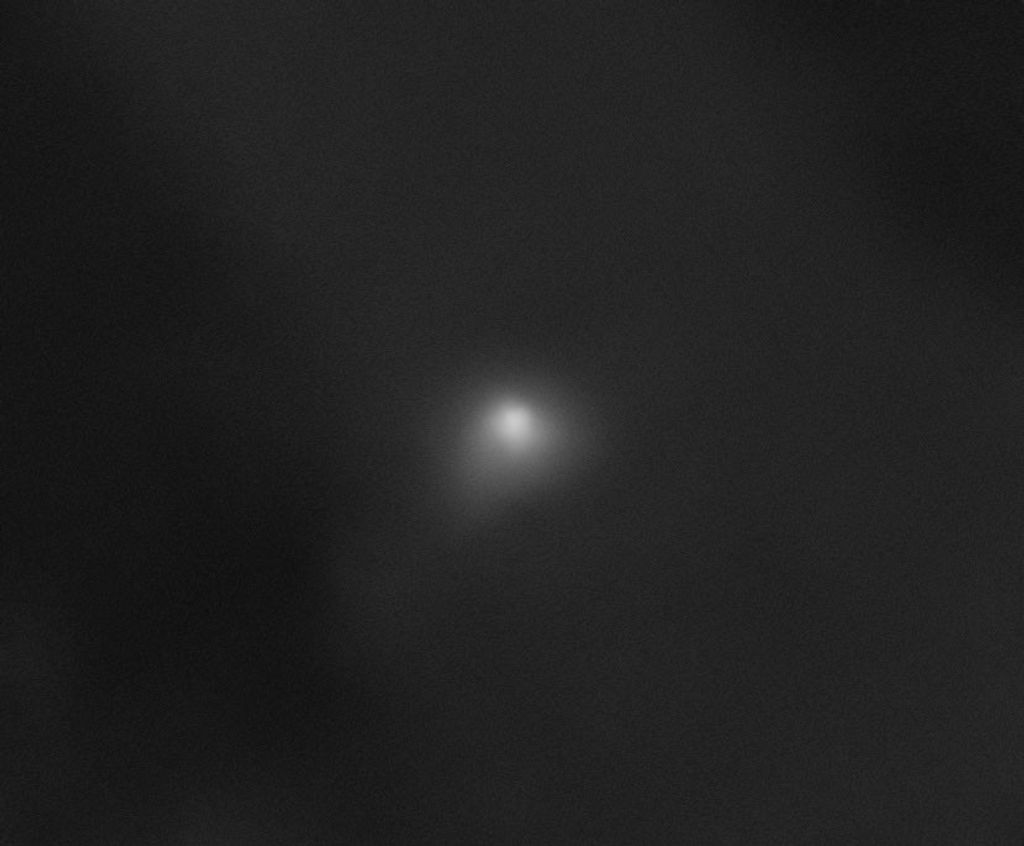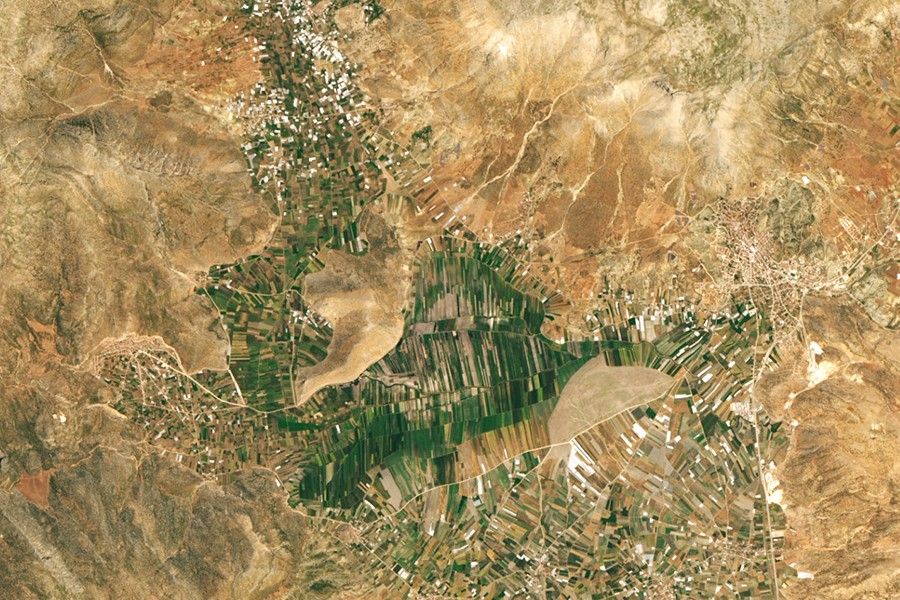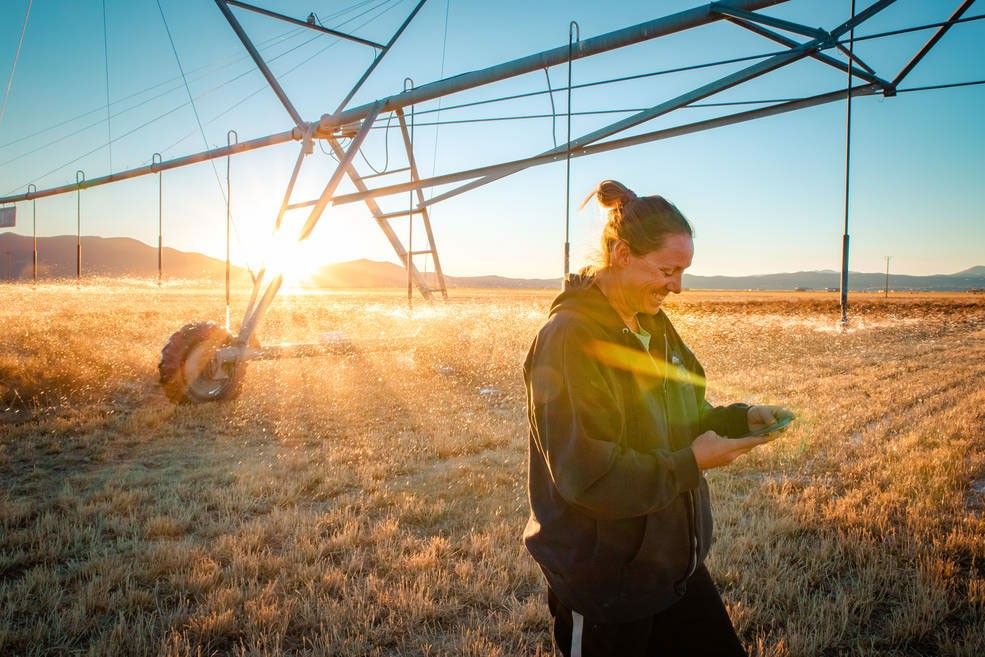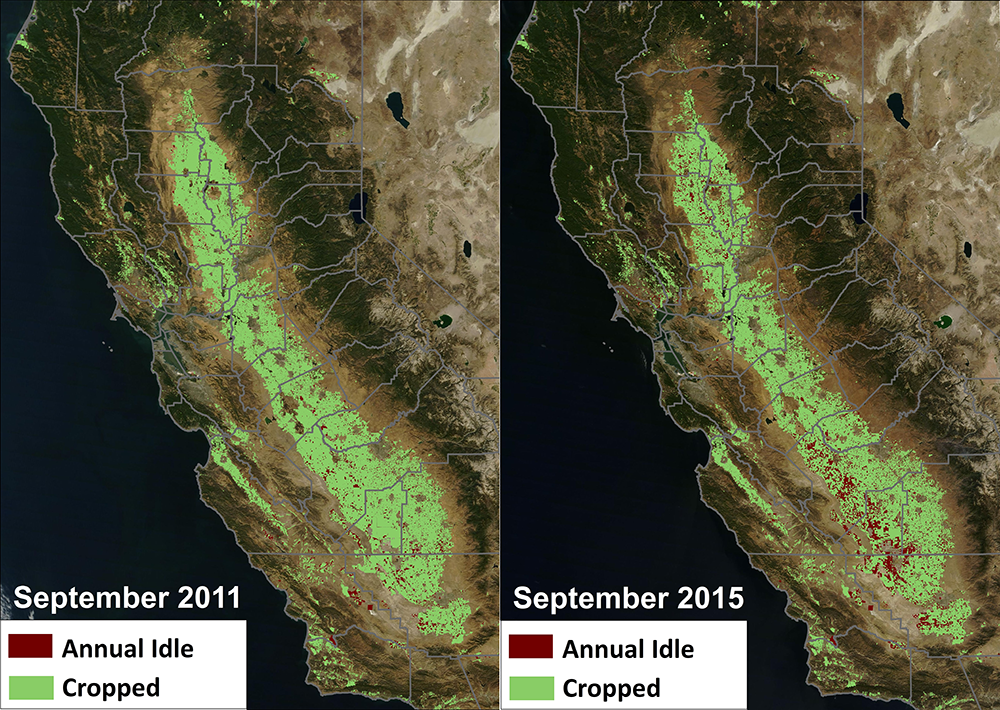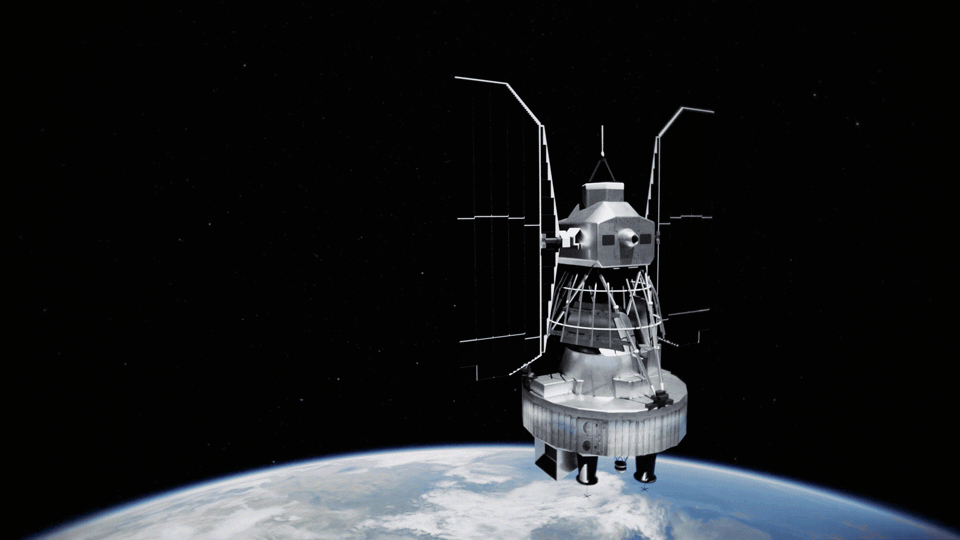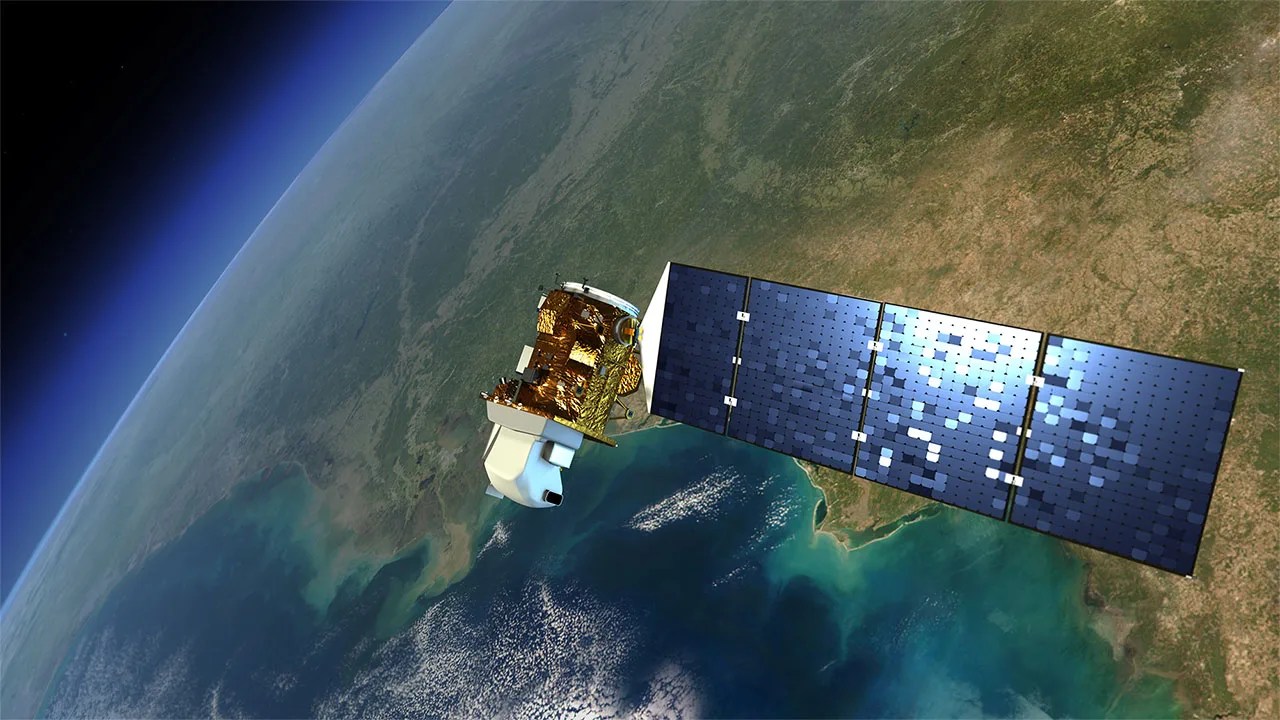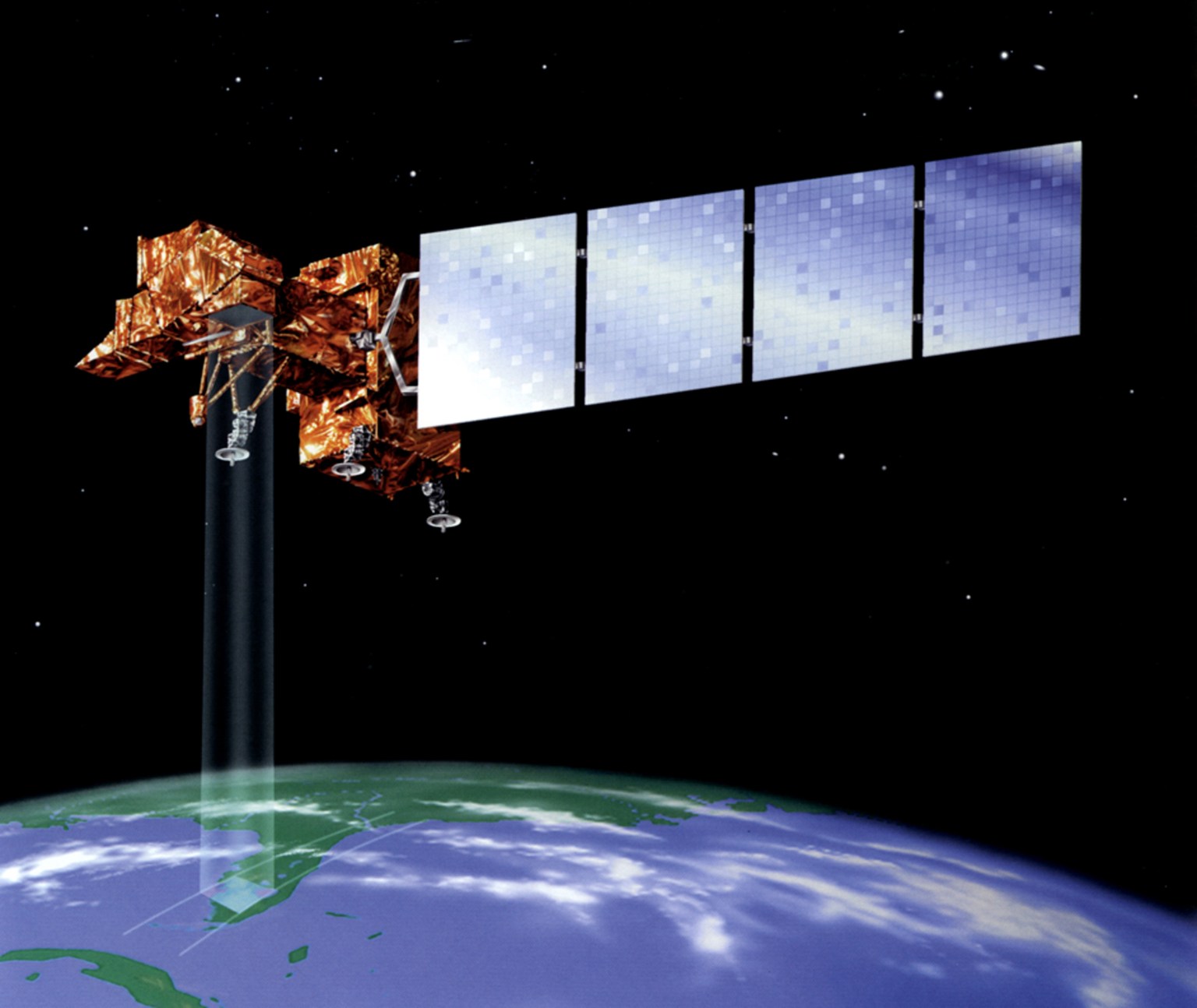Landsat's Role in Agriculture and Food Security
Worldwide, millions of people are helped by Landsat-data-based decisions that impact food and water management. Food and farming organizations rely on the unbiased, accurate and timely information provided by Landsat satellites. The data enable people to analyze the health and vigor of crops as they mature over the growing season; the needs of specific fields for fertilizer, irrigation and rotation; acreage amounts for use in forecasting crop production and fighting crop insurance fraud; amounts of water used in irrigation; and the impacts of drought.
Data Unmatched in Quality, Coverage, Detail and Value
Landsat provides unbiased views of how our farmland and environmental conditions arechanging over time. Each Landsat satellite observes the same place on Earth every 16days. With two satellites in orbit (Landsats 8 and 9) the same place may be observed every 8 days.
Landsat views individual farms and fields, providing critical data for management of food resources. For instance, the sensor’s ability to see infrared light enables analysts to discern when crops are stressed, even sometimes when plants appear healthy to the naked eye.
Landsat Data for Local and Global Decision-making
- Monitoring and managing crops
- Forecasting crop production
- Measuring and managing water use
- Monitoring drought
- Fighting crop insurance frau
Monitoring and Managing Crops
Farmers download free Landsat data to monitor crop health and pinpoint signs of crop stress, which affects yields. “We’d have to walk our entire 1,200 hundred-plus acres on a regular basis to see the same things we can see by just downloading satellite images,” said Noreen Thomas of Moorhead, MN. With a little training, Thomas has learned to interpret the false color images, showing yellows where crops are infested with disease or pests, shades of red indicating crop health, black where flooding occurs, and brown where unwanted pesticides have landed. Landsat also helps farmers monitor their crop rotations from season to season.
Forecasting Crop Production
The U.S. Department of Agriculture issues several reports during the growing season that attempt to gauge what the year-end tally for certain crops will be, Landsat data are one of the inputs used to make these estimates as accurate as possible. In turn, the multi-million dollar U.S. agricultural commodities market relies on these crop predictions when conducting futures trading
Measuring Water Supplies and Use
Evaporation rates from irrigated agriculture nearly always exceed rainfall inputs and therefore represent a stress on the water resource. The open-source OpenET tool uses Landsat thermal data and relatively high resolution Landsat imagery to determine field-level rates of evapotranspiration, enabling farmers and water managers across the U.S. to quantify water consumption and increase irrigation efficiency.
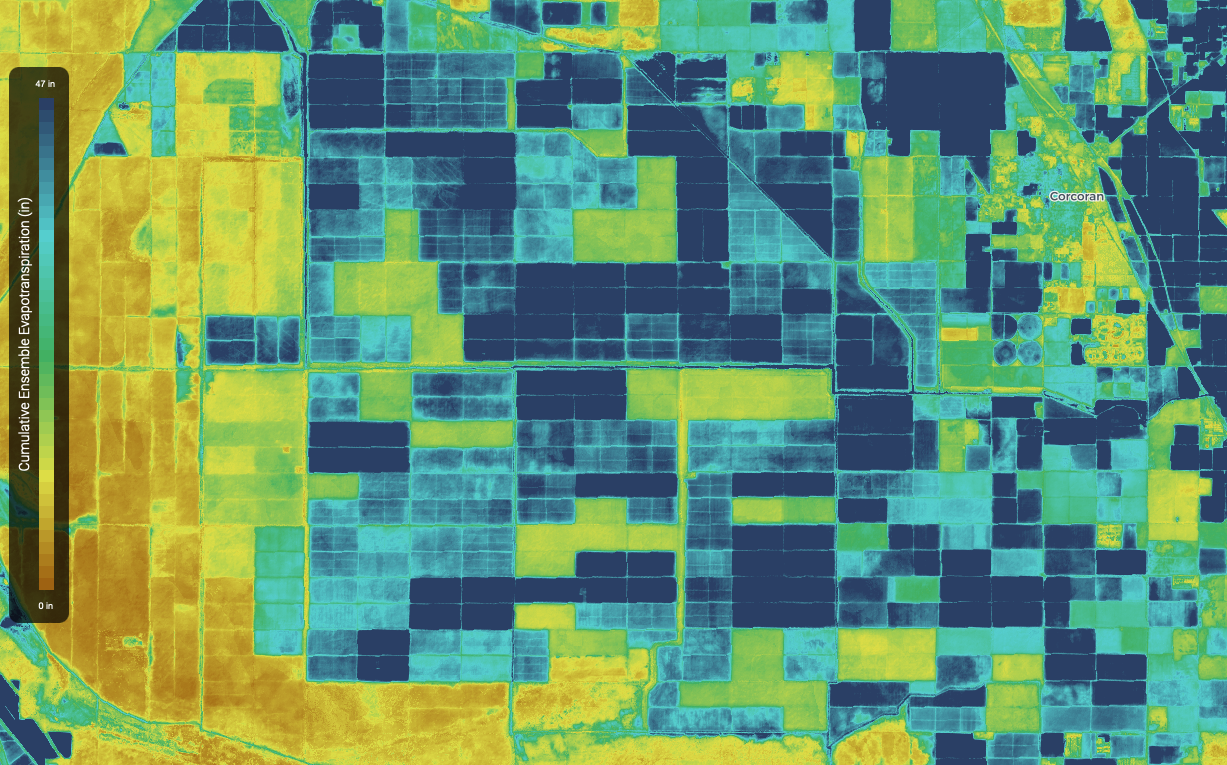
Monitoring the Crop Impacts of Natural Disasters
Harmful, costly droughts can be monitored and better understood through Landsat’s observations of vegetation that is stressed from lack of water. Healthy vegetation reflects more radiation in infrared wavelengths than drought stressed vegetation does. Landsat can also detect vegetation that has been flattened due to hail storms or floods.
Fighting Crop Insurance Fraud
Landsat images of farms suspected of fraudulent insurance claims can be analyzed for the veracity of the claims. Analysts can see whether or not a farmer actually planted or harvested specific crops in the amounts claimed. Landsat has played a major role in shifting the tide of fraud cases.
Further Reading
OpenET: A Satellite-Based Water Data Resource
Mapping Twenty Years Of Historical U.S. Midwestern Corn And Soybean Information with Landsat














